2. Roberts WE, Stocum DL. 2018; Part II: temporomandibular joint (TMJ)-regeneration, degeneration, and adaptation. Curr Osteoporos Rep. 16:369–79. DOI:
10.1007/s11914-018-0462-8. PMID:
29943316.

3. Stocum DL, Roberts WE. 2018; Part I: development and physiology of the temporomandibular joint. Curr Osteoporos Rep. 16:360–8. DOI:
10.1007/s11914-018-0447-7. PMID:
29948821.

4. Barkin S, Weinberg S. 2000; Internal derangements of the temporomandibular joint: the role of arthroscopic surgery and arthrocentesis. J Can Dent Assoc. 66:199–203.
5. Chisnoiu AM, Picos AM, Popa S, Chisnoiu PD, Lascu L, Picos A, et al. 2015; Factors involved in the etiology of temporomandibular disorders - a literature review. Clujul Med. 88:473–8. DOI:
10.15386/cjmed-485. PMID:
26732121. PMCID:
PMC4689239.

7. Krishnan DG. 2017; Soft tissue trauma in the temporomandibular joint region associated with condylar fractures. Atlas Oral Maxillofac Surg Clin North Am. 25:63–7. DOI:
10.1016/j.cxom.2016.11.002. PMID:
28153184.

9. Salé H, Isberg A. 2007; Delayed temporomandibular joint pain and dysfunction induced by whiplash trauma: a controlled prospective study. J Am Dent Assoc. 138:1084–91. DOI:
10.14219/jada.archive.2007.0320. PMID:
17670875.
10. Takahashi T, Ohtani M, Sano T, Ohnuki T, Kondoh T, Fukuda M. 2004; Magnetic resonance evidence of joint effusion of the temporomandibular joint after fractures of the mandibular condyle: a preliminary report. Cranio. 22:124–31. DOI:
10.1179/crn.2004.016. PMID:
15134412.

11. Tripathi R, Sharma N, Dwivedi AN, Kumar S. 2015; Severity of soft tissue injury within the temporomandibular joint following condylar fracture as seen on magnetic resonance imaging and its impact on outcome of functional management. J Oral Maxillofac Surg. 73:2379. e1-7. DOI:
10.1016/j.joms.2015.09.003. PMID:
26428614.

12. Yun PY, Kim YK. 2005; The role of facial trauma as a possible etiologic factor in temporomandibular joint disorder. J Oral Maxillofac Surg. 63:1576–83. DOI:
10.1016/j.joms.2005.05.318. PMID:
16243173.

13. Lieberthal J, Sambamurthy N, Scanzello CR. 2015; Inflammation in joint injury and post-traumatic osteoarthritis. Osteoarthritis Cartilage. 23:1825–34. DOI:
10.1016/j.joca.2015.08.015. PMID:
26521728. PMCID:
PMC4630675.

14. Punzi L, Galozzi P, Luisetto R, Favero M, Ramonda R, Oliviero F, et al. 2016; Post-traumatic arthritis: overview on pathogenic mechanisms and role of inflammation. RMD Open. 2:e000279. DOI:
10.1136/rmdopen-2016-000279. PMID:
27651925. PMCID:
PMC5013366.

15. Englund M, Guermazi A, Lohmander LS. 2009; The meniscus in knee osteoarthritis. Rheum Dis Clin North Am. 35:579–90. DOI:
10.1016/j.rdc.2009.08.004. PMID:
19931804.

16. Gelber AC, Hochberg MC, Mead LA, Wang NY, Wigley FM, Klag MJ. 2000; Joint injury in young adults and risk for subsequent knee and hip osteoarthritis. Ann Intern Med. 133:321–8. DOI:
10.7326/0003-4819-133-5-200009050-00007. PMID:
10979876.

17. Teunis T, Beekhuizen M, Van Osch GV, Schuurman AH, Creemers LB, van Minnen LP. 2014; Soluble mediators in posttraumatic wrist and primary knee osteoarthritis. Arch Bone Jt Surg. 2:146–50. PMID:
25386573. PMCID:
PMC4225017.
18. Barton KI, Shekarforoush M, Heard BJ, Sevick JL, Vakil P, Atarod M, et al. 2017; Use of pre-clinical surgically induced models to understand biomechanical and biological consequences of PTOA development. J Orthop Res. 35:454–65. DOI:
10.1002/jor.23322. PMID:
27256202.

19. Olson SA, Horne P, Furman B, Huebner J, Al-Rashid M, Kraus VB, et al. 2014; The role of cytokines in posttraumatic arthritis. J Am Acad Orthop Surg. 22:29–37. DOI:
10.5435/JAAOS-22-01-29. PMID:
24382877.

20. Shen PC, Wu CL, Jou IM, Lee CH, Juan HY, Lee PJ, et al. 2011; T helper cells promote disease progression of osteoarthritis by inducing macrophage inflammatory protein-1γ. Osteoarthritis Cartilage. 19:728–36. DOI:
10.1016/j.joca.2011.02.014. PMID:
21376128.

21. Takebe K, Rai MF, Schmidt EJ, Sandell LJ. 2015; The chemokine receptor CCR5 plays a role in post-traumatic cartilage loss in mice, but does not affect synovium and bone. Osteoarthritis Cartilage. 23:454–61. DOI:
10.1016/j.joca.2014.12.002. PMID:
25498590. PMCID:
PMC4341917.

22. Teunis T, Beekhuizen M, Kon M, Creemers LB, Schuurman AH, van Minnen LP. 2013; Inflammatory mediators in posttraumatic radiocarpal osteoarthritis. J Hand Surg Am. 38:1735–40. DOI:
10.1016/j.jhsa.2013.06.023. PMID:
23932814.

23. van Meegeren ME, Roosendaal G, Jansen NW, Wenting MJ, van Wesel AC, van Roon JA, et al. 2012; IL-4 alone and in combination with IL-10 protects against blood-induced cartilage damage. Osteoarthritis Cartilage. 20:764–72. DOI:
10.1016/j.joca.2012.04.002. PMID:
22503813.

24. Anderson DD, Chubinskaya S, Guilak F, Martin JA, Oegema TR, Olson SA, et al. 2011; Post-traumatic osteoarthritis: improved understanding and opportunities for early intervention. J Orthop Res. 29:802–9. DOI:
10.1002/jor.21359. PMID:
21520254. PMCID:
PMC3082940.

25. Caron JP, Fernandes JC, Martel-Pelletier J, Tardif G, Mineau F, Geng C, et al. 1996; Chondroprotective effect of intraarticular injections of interleukin-1 receptor antagonist in experimental osteoarthritis. Suppression of collagenase-1 expression. Arthritis Rheum. 39:1535–44. DOI:
10.1002/art.1780390914. PMID:
8814066.

26. Goodrich LR, Phillips JN, McIlwraith CW, Foti SB, Grieger JC, Gray SJ, et al. 2013; Optimization of scAAVIL-1ra in vitro and in vivo to deliver high levels of therapeutic protein for treatment of osteoarthritis. Mol Ther Nucleic Acids. 2:e70. DOI:
10.1038/mtna.2012.61. PMID:
23385523. PMCID:
PMC3586798.

27. Fischer DJ, Mueller BA, Critchlow CW, LeResche L. 2006; The association of temporomandibular disorder pain with history of head and neck injury in adolescents. J Orofac Pain. 20:191–8. PMID:
16913428.
28. Häggman-Henrikson B, Rezvani M, List T. 2014; Prevalence of whiplash trauma in TMD patients: a systematic review. J Oral Rehabil. 41:59–68. DOI:
10.1111/joor.12123. PMID:
24443899.

29. Kim YK. 1997; Traumatic TMJ injury. J Korean Assoc Maxillofac Plast Reconstr Surg. 19:191–9.
30. Klobas L, Tegelberg A, Axelsson S. 2004; Symptoms and signs of temporomandibular disorders in individuals with chronic whiplash-associated disorders. Swed Dent J. 28:29–36. PMID:
15129603.
32. Dimitroulis G, Dolwick MF, Martinez A. 1995; Temporomandibular joint arthrocentesis and lavage for the treatment of closed lock: a follow-up study. Br J Oral Maxillofac Surg. 33:23–6. discussion 26-7. DOI:
10.1016/0266-4356(95)90081-0.

33. Bueno CH, Pereira DD, Pattussi MP, Grossi PK, Grossi ML. 2018; Gender differences in temporomandibular disorders in adult populational studies: a systematic review and meta-analysis. J Oral Rehabil. 45:720–9. DOI:
10.1111/joor.12661. PMID:
29851110.

34. García-Guerrero I, Ramírez JM, Martínez-González JM, Gómez de Diego R, Poblador MS, Lancho JL. 2018; Complications in the treatment of mandibular condylar fractures: Surgical versus conservative treatment. Ann Anat. 216:60–8. DOI:
10.1016/j.aanat.2017.10.007. PMID:
29223659.

35. Pullinger AG, Seligman DA. 1991; Trauma history in diagnostic groups of temporomandibular disorders. Oral Surg Oral Med Oral Pathol. 71:529–34. DOI:
10.1016/0030-4220(91)90355-G. PMID:
2047090.

36. Tabrizi R, Bahramnejad E, Mohaghegh M, Alipour S. 2014; Is the frequency of temporomandibular dysfunction different in various mandibular fractures? J Oral Maxillofac Surg. 72:755–61. DOI:
10.1016/j.joms.2013.10.018. PMID:
24342579.

37. Howard RP, Hatsell CP, Guzman HM. 1995; Temporomandibular joint injury potential imposed by the low-velocity extension-flexion maneuver. J Oral Maxillofac Surg. 53:256–62. discussion 263. DOI:
10.1016/0278-2391(95)90220-1.

38. Brown TD, Johnston RC, Saltzman CL, Marsh JL, Buckwalter JA. 2006; Posttraumatic osteoarthritis: a first estimate of incidence, prevalence, and burden of disease. J Orthop Trauma. 20:739–44. DOI:
10.1097/01.bot.0000246468.80635.ef. PMID:
17106388.

39. Kramer WC, Hendricks KJ, Wang J. 2011; Pathogenetic mechanisms of posttraumatic osteoarthritis: opportunities for early intervention. Int J Clin Exp Med. 4:285–98. PMID:
22140600. PMCID:
PMC3228584.
40. Honorati MC, Bovara M, Cattini L, Piacentini A, Facchini A. 2002; Contribution of interleukin 17 to human cartilage degradation and synovial inflammation in osteoarthritis. Osteoarthritis Cartilage. 10:799–807. DOI:
10.1053/joca.2002.0829. PMID:
12359166.

41. Bondeson J, Blom AB, Wainwright S, Hughes C, Caterson B, van den Berg WB. 2010; The role of synovial macrophages and macrophage-produced mediators in driving inflammatory and destructive responses in osteoarthritis. Arthritis Rheum. 62:647–57. DOI:
10.1002/art.27290. PMID:
20187160.

42. Culemann S, Grüneboom A, Nicolás-Ávila JÁ, Weidner D, Lämmle KF, Rothe T, et al. 2019; Locally renewing resident synovial macrophages provide a protective barrier for the joint. Nature. 572:670–5. DOI:
10.1038/s41586-019-1471-1. PMID:
31391580. PMCID:
PMC6805223.

43. Tu J, Hong W, Guo Y, Zhang P, Fang Y, Wang X, et al. 2019; Ontogeny of synovial macrophages and the roles of synovial macrophages from different origins in arthritis. Front Immunol. 10:1146. DOI:
10.3389/fimmu.2019.01146. PMID:
31231364. PMCID:
PMC6558408.

44. Tozoglu S, Al-Belasy FA, Dolwick MF. 2011; A review of techniques of lysis and lavage of the TMJ. Br J Oral Maxillofac Surg. 49:302–9. DOI:
10.1016/j.bjoms.2010.03.008. PMID:
20471143.

45. Kopp S, Wenneberg B, Haraldson T, Carlsson GE. 1985; The short-term effect of intra-articular injections of sodium hyaluronate and corticosteroid on temporomandibular joint pain and dysfunction. J Oral Maxillofac Surg. 43:429–35. DOI:
10.1016/S0278-2391(85)80050-1. PMID:
3858479.

46. Sequeira J, Rao BHS, Kedia PR. 2019; Efficacy of sodium hyaluronate for temporomandibular joint disorder by single-puncture arthrocentesis. J Maxillofac Oral Surg. 18:88–92. DOI:
10.1007/s12663-018-1093-4. PMID:
30728698. PMCID:
PMC6328828.

47. Bertolami CN, Gay T, Clark GT, Rendell J, Shetty V, Liu C, et al. 1993; Use of sodium hyaluronate in treating temporomandibular joint disorders: a randomized, double-blind, placebo-controlled clinical trial. J Oral Maxillofac Surg. 51:232–42. DOI:
10.1016/S0278-2391(10)80163-6. PMID:
8445463.

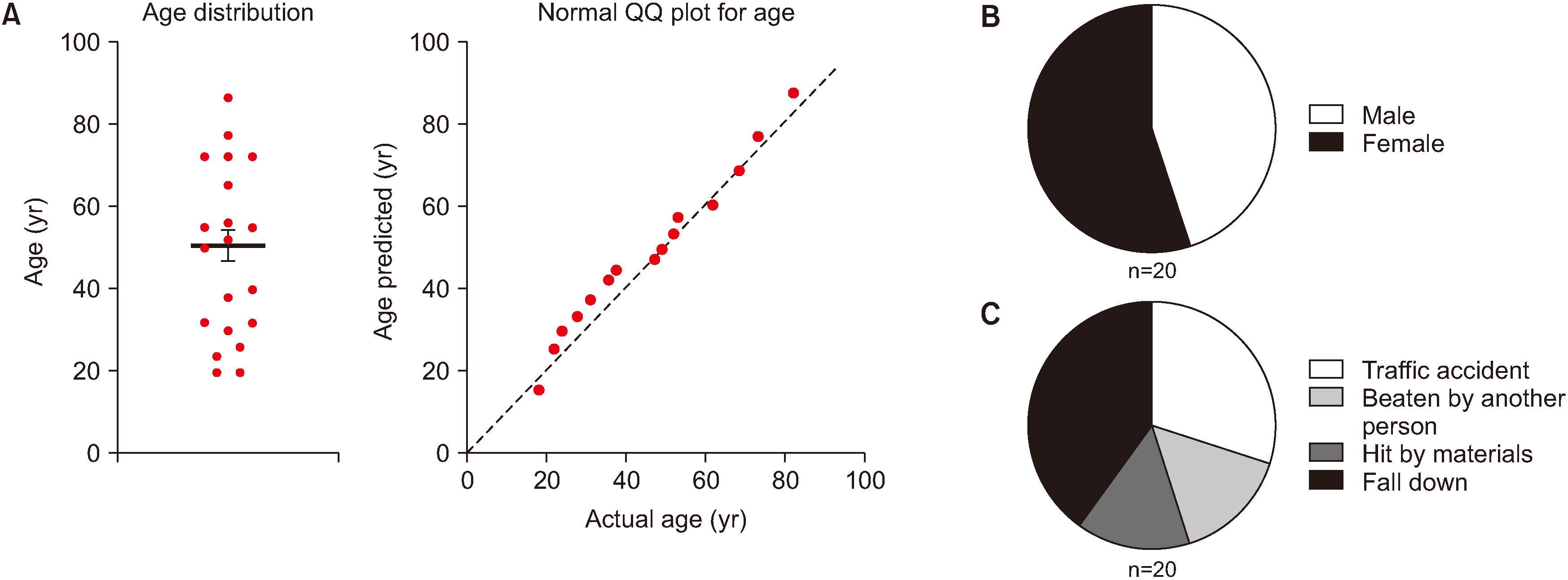
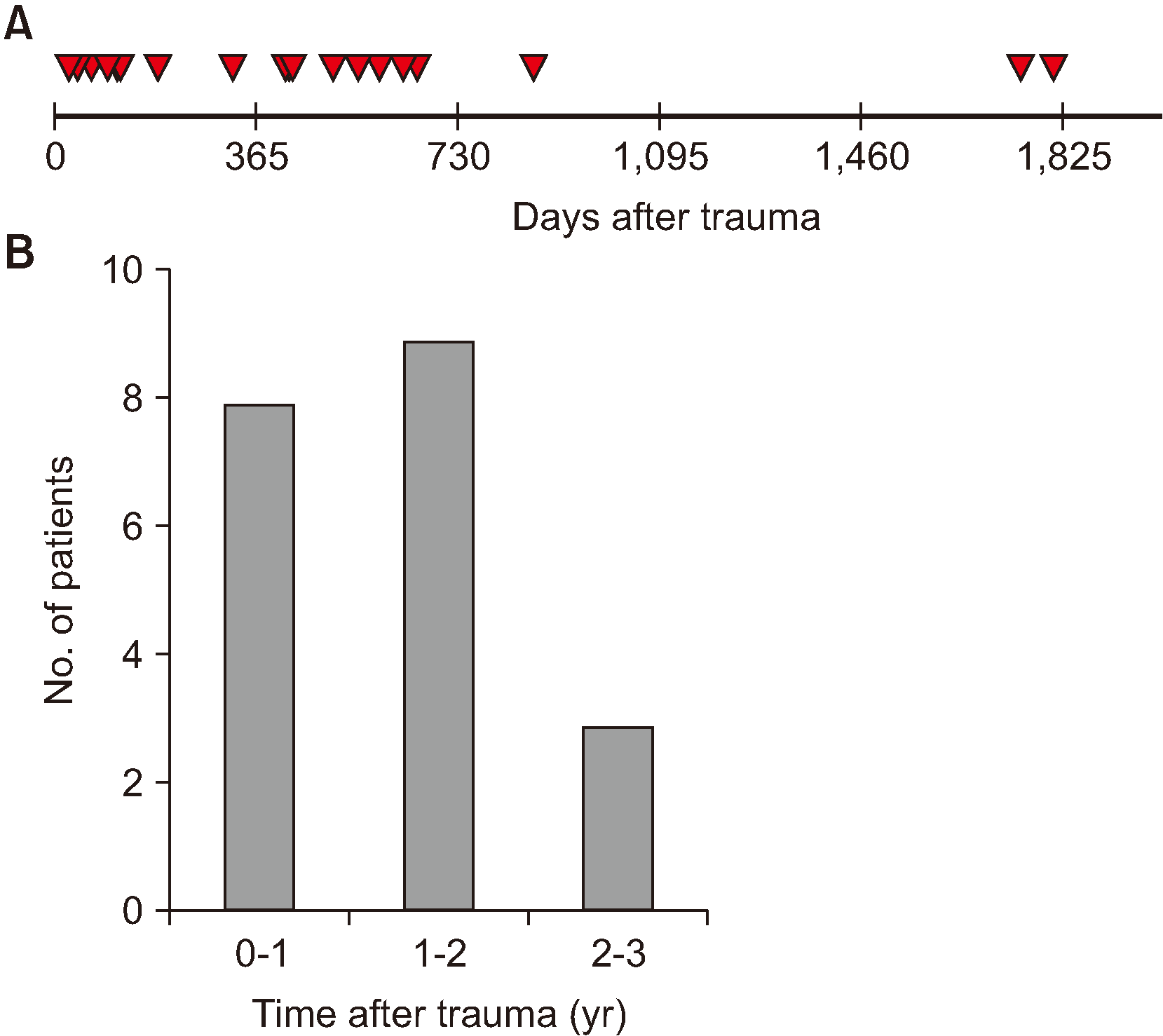
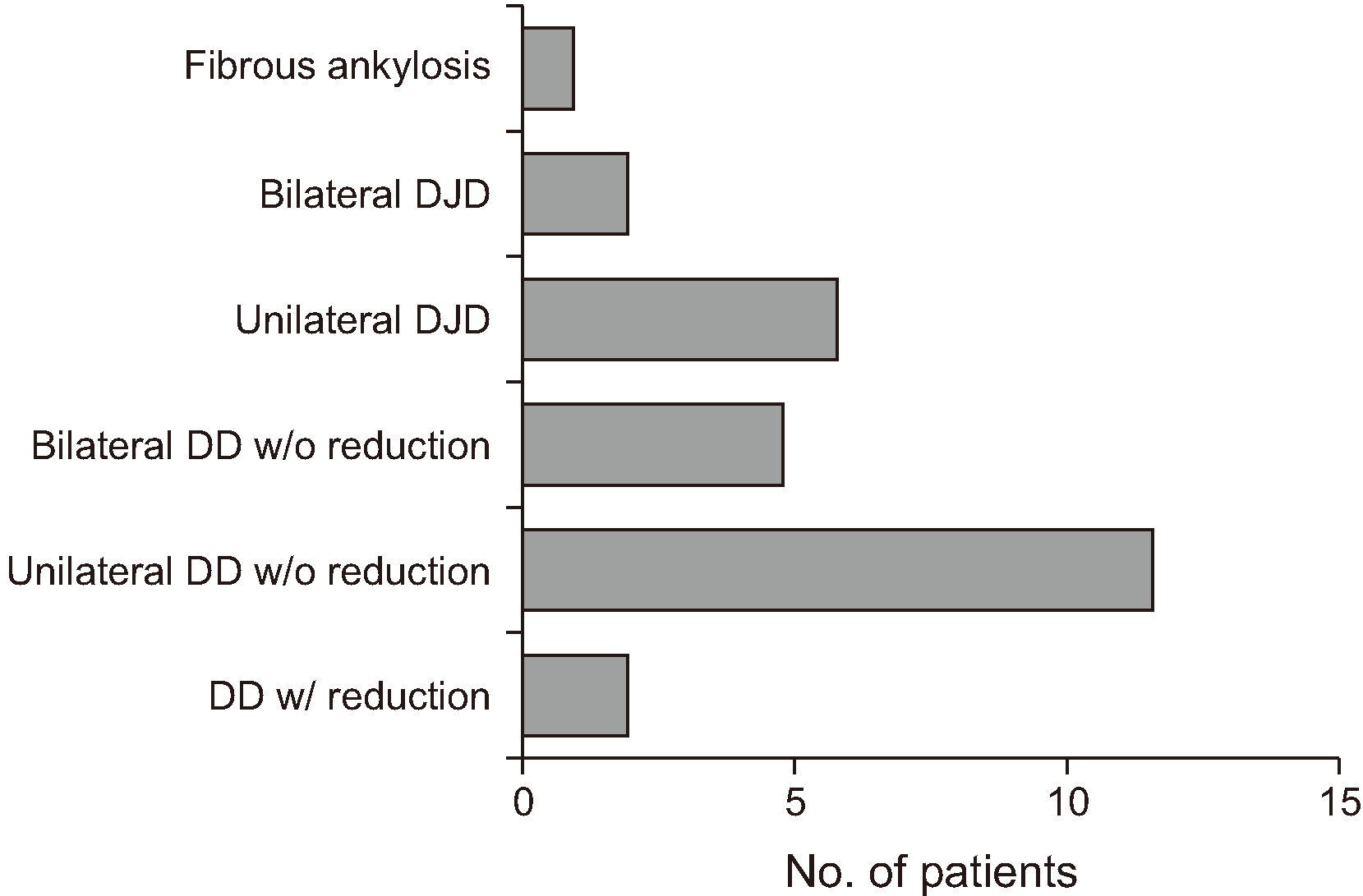
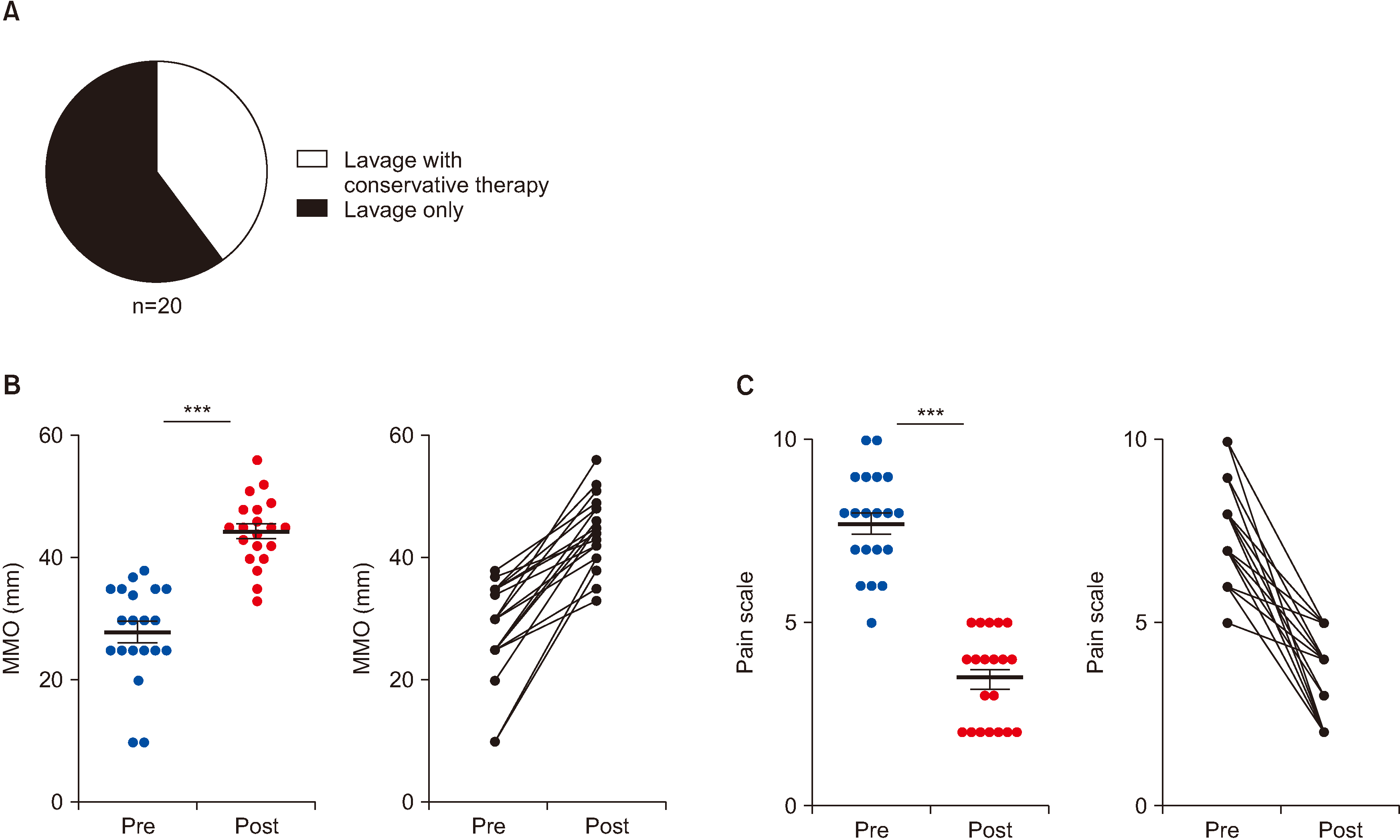
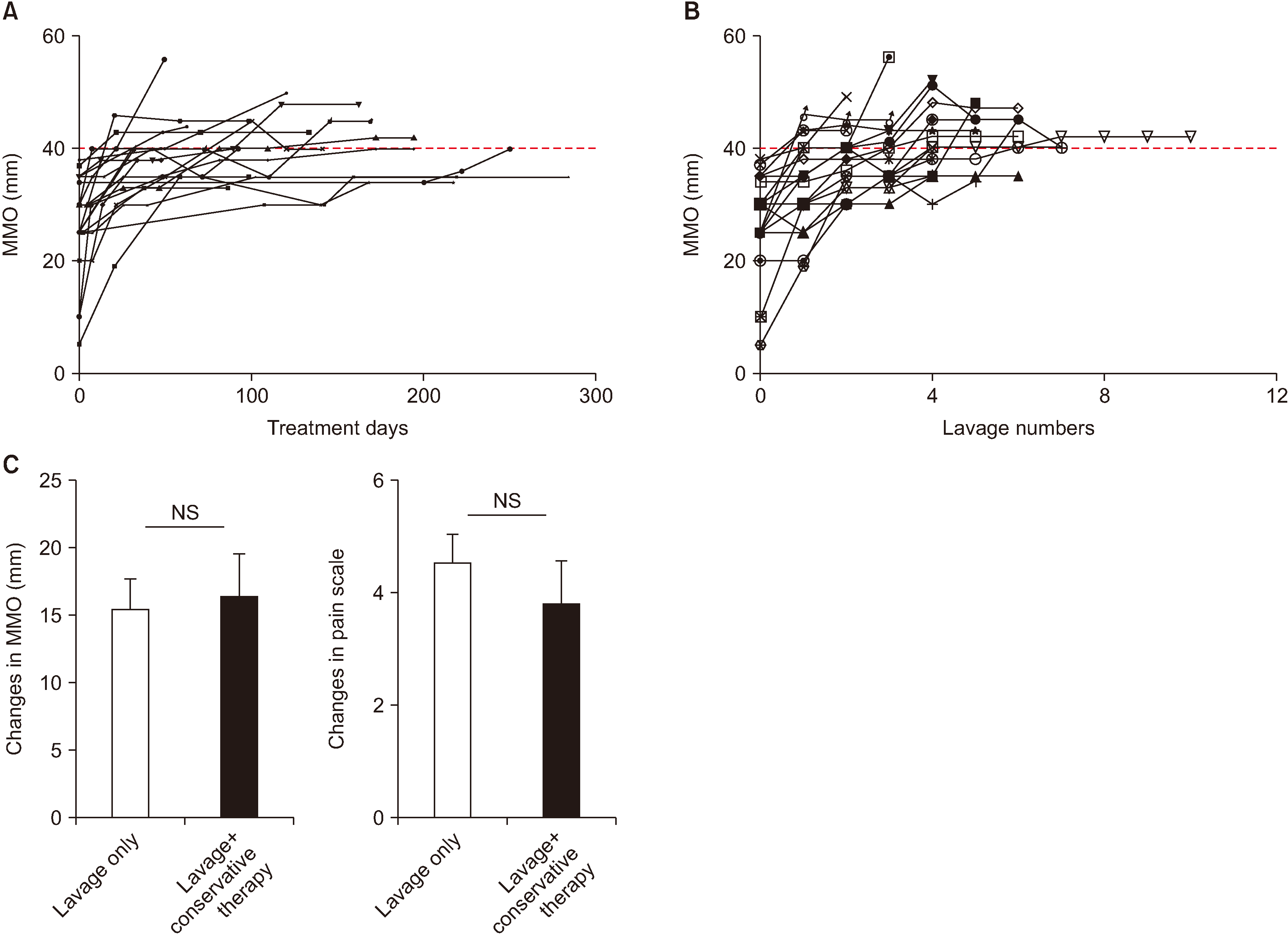




 PDF
PDF Citation
Citation Print
Print



 XML Download
XML Download